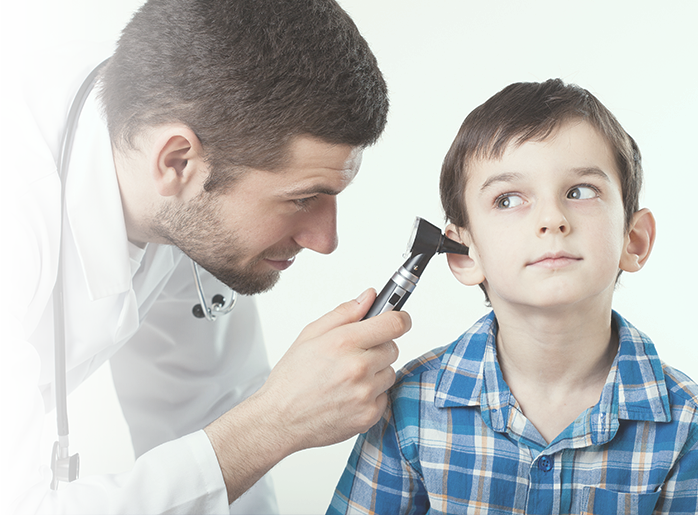Ear Infection
Know More: Ear Infections
Trustworthy information, straight from the source. Education is the first step in an empowering healthcare plan. Learn more about ear infections, from prevention to diagnosis and treatment.

Condition Overview
What are ear infections?
An ear infection is an inflammation of the middle ear, usually caused by bacteria, that occurs when fluid builds up behind the eardrum. Anyone can get an ear infection, but children get them more often than adults. Five out of six children will have at least one ear infection by their third birthday. The scientific name for an ear infection is otitis media (OM).
Risk Prevention
What increases your risk for ear infections?
Middle ear infections are most common in children and happen when fluid becomes trapped in the middle ear. This can occur during a throat infection, cold, or allergic reaction. Adults who suffer frequent middle ear infections should see an ENT physician.
How can you reduce your risk for ear infections?
- Do not smoke. People exposed to cigarette smoke are more likely to get ear infections. Even the fumes from tobacco smoke on your hair and clothes can cause problems.
- Always practice good hand-hygiene.
- Make sure your child’s immunizations are up to date.
- Breastfeed your baby. Bottle-fed babies have an increased risk for developing ear infections – especially if they drink their bottles laying down as opposed to sitting up.
- Try to limit your child’s pacifier use.
- Try to limit the use of group child care.
Diagnosis & Treatment Options
How are ear infections diagnosed?
Ear infections can be quickly diagnosed by your healthcare provider. Your healthcare provider can check for signs of an ear infection during a physical exam or ear exam using a pneumatic otoscope, which pushes air into the ear and allows to see if the eardrum is moving freely.
How are ear infections treated?
Most ear infections get better without treatment, but managing pain from an earache is important. The following treatment can be performed at home:
- Use over-the-counter pain relievers. Pain relievers, such as nonsteroidal anti-inflammatory medicines (Advil, Aleve, and Motrin, for example) and acetaminophen (such as Tylenol), will help ease the pain of an earache.
- Apply heat to the ear, which may help with pain. Use a warm washcloth.
- Rest and recuperate. Resting will help the body fight the infection.
- Use eardrops. Healthcare providers often suggest eardrops for earache pain. Don’t use eardrops without your healthcare provider’s advice, especially if your child has tubes in his or her ears.
If the ear infection has not improved after a few days of home treatment, contact your healthcare provider. More severe cases may require antibiotics to be prescribed.
Preparing for Care
Contact your healthcare provider immediately if you or your child experience any of the following:
- Sudden hearing loss, dizziness or severe pain.
- High fever and stiff neck.
- Pain, redness, or swelling behind or around the ear.
Schedule an appointment with your healthcare provider if you:
- Experience no relief after using home treatment for several hours.
- Earache intensifies after treatment.
- Have a fever of 101F or greater.
